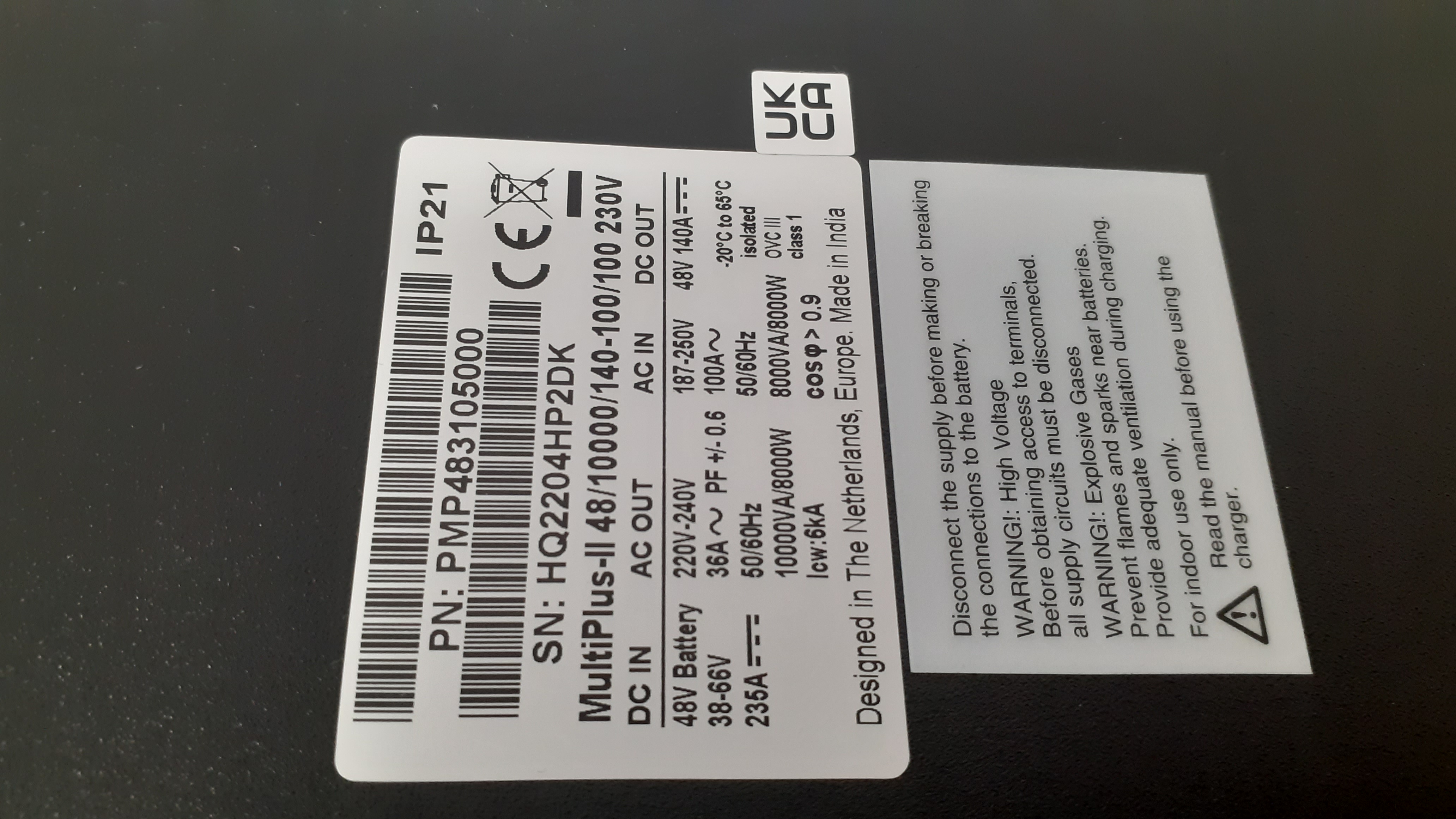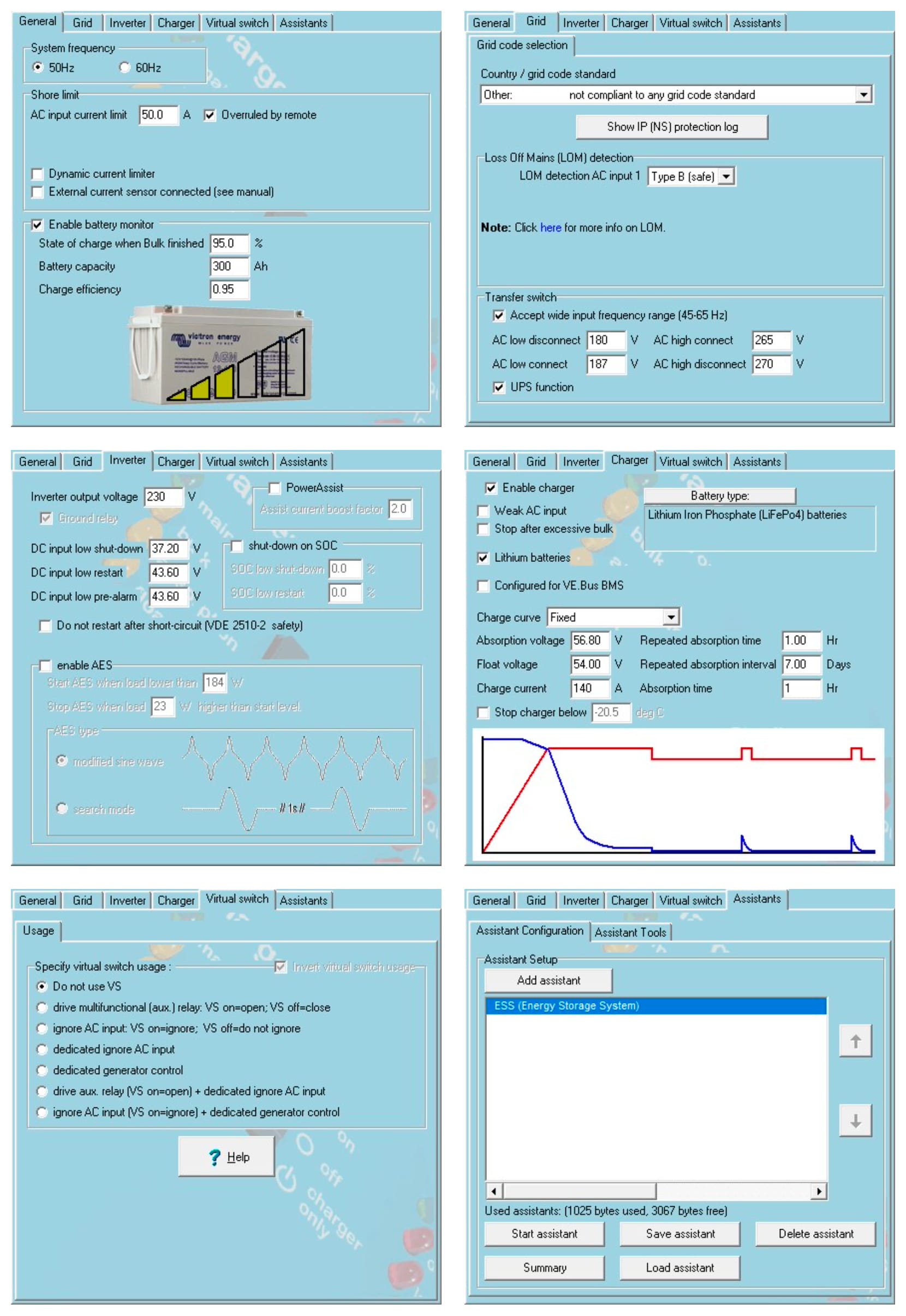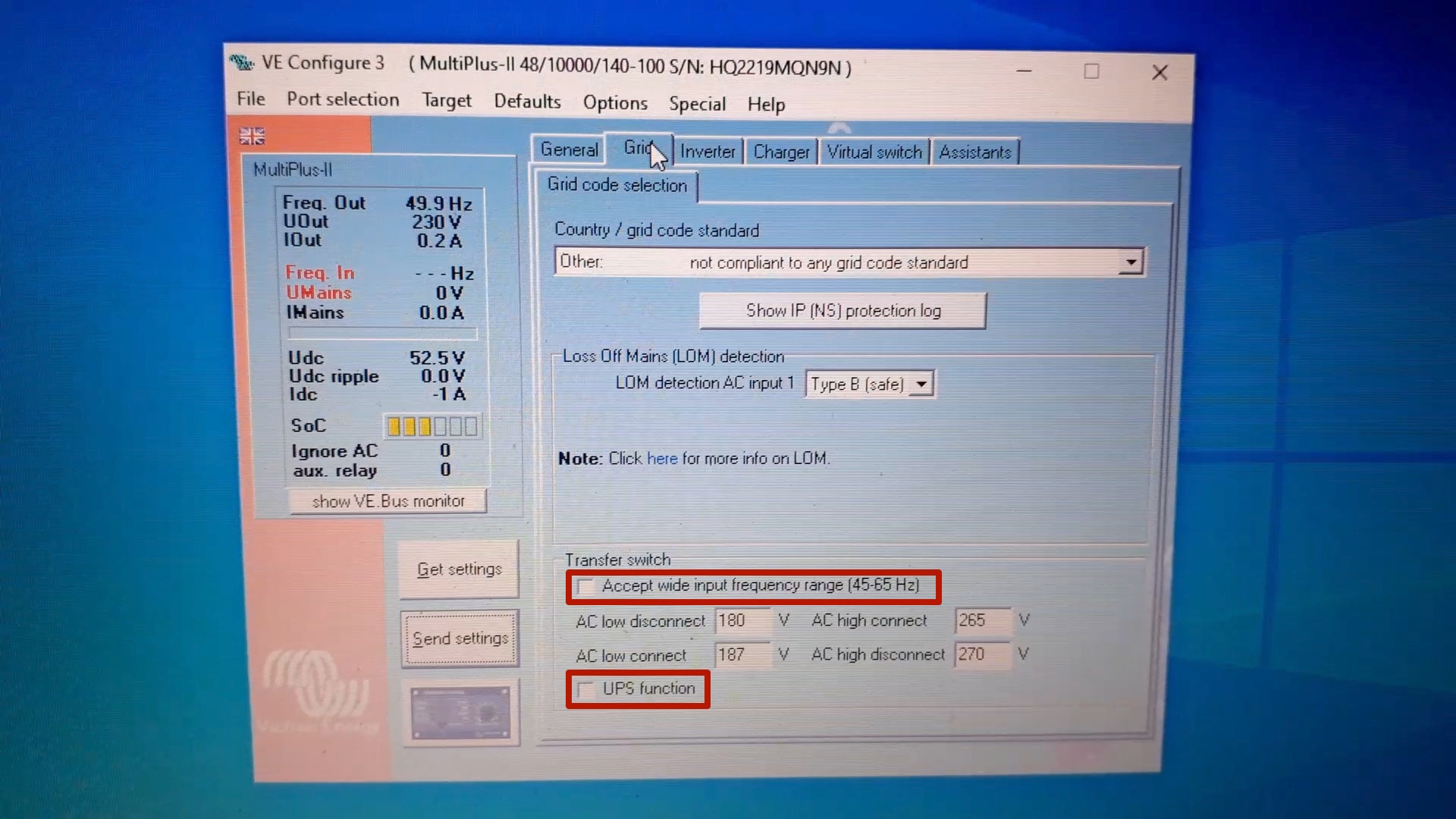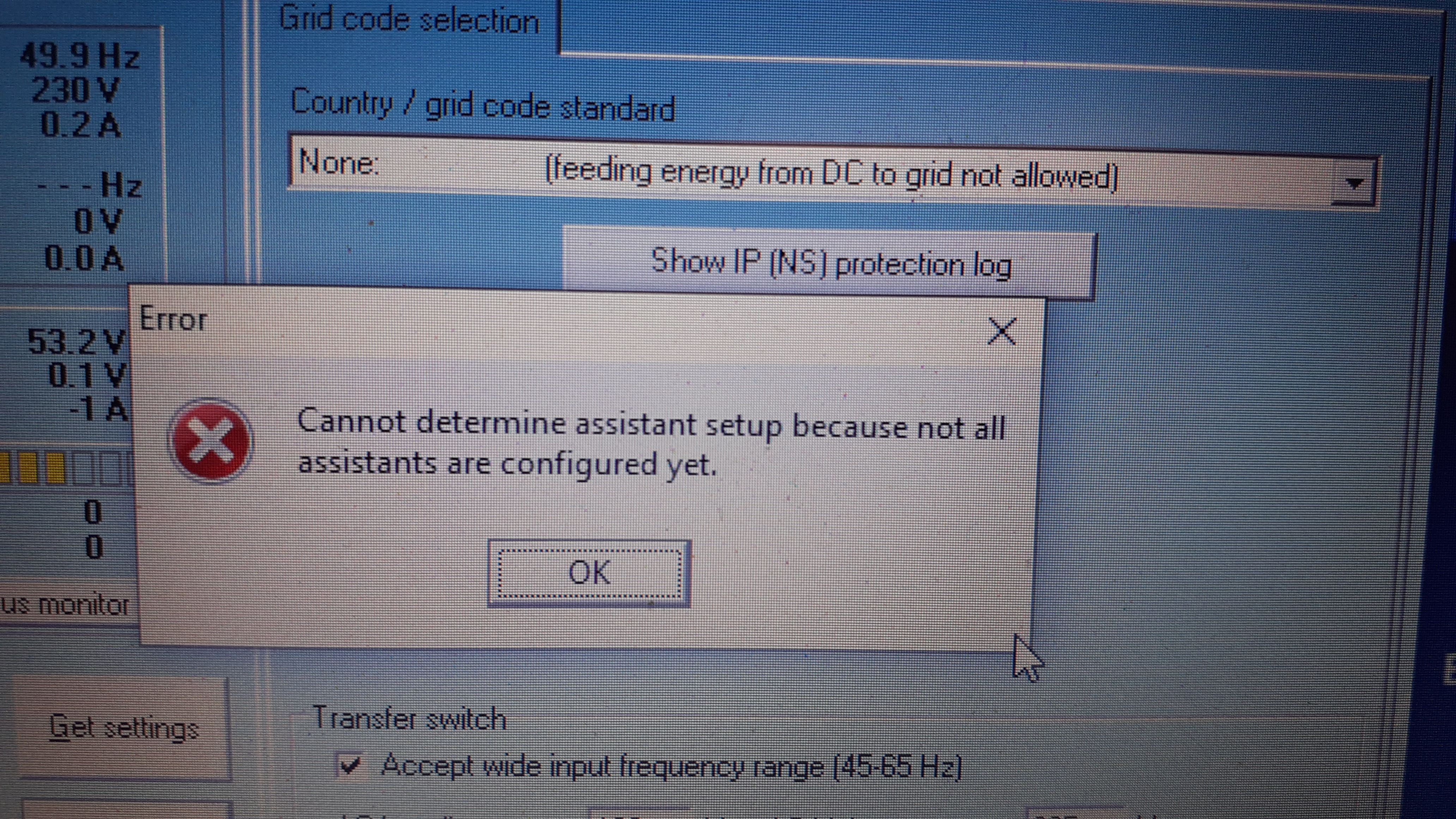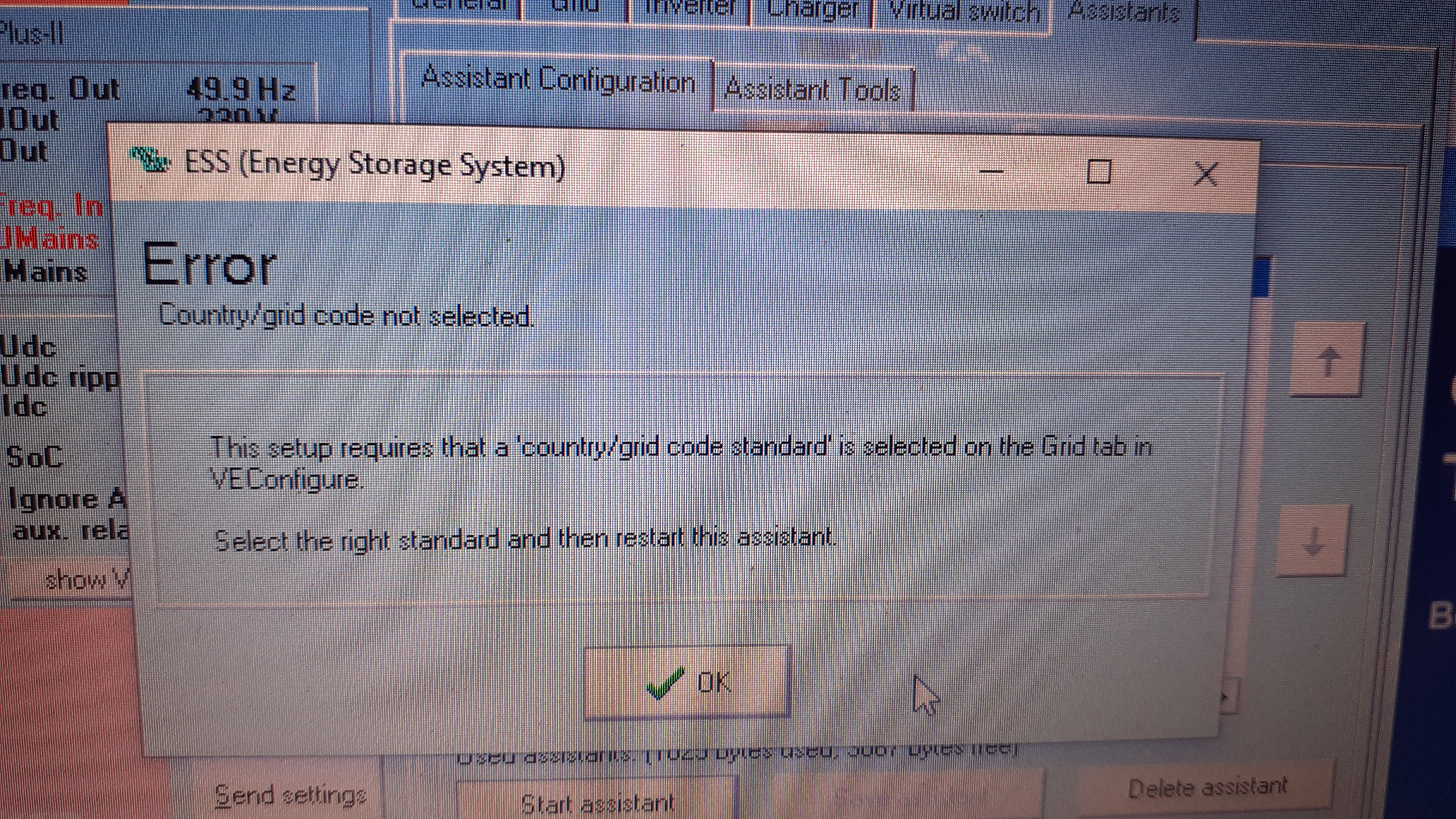Hello dear colleagues. Yesterday I put into operation a system with a MultiPlus-II 10 kVA inverter with the latest firmware 497. In standalone mode, the inverter works stably, but when connected to the grid at the AC input, it behaves very strange. As soon as the inverter is connected to the grid, its transformer begins to hum, as if the load has increased dramatically, after which the Multi returns to inverter mode (no errors or notifications appear). Then he tries to connect to the grid again, and sometimes he still succeeds. In this case, a strange undulating sound of the transformer may occur, as if there is a frequency desynchronization, the cooling fans turn on. The voltage in the grid is about 235 volts, the frequency is 50 hertz. So the inverter can work for several minutes, but then everything repeats again.
I have over 30 stable running systems with Multi and Quattro and all the basic configuration settings are the same. I usually choose "Other" as the grid standard as Bulgaria is not on the list and we do not export energy to the grid. Faced with this problem, I decided to do some experiments with different standards. When I chose "Germany" - the problem disappeared, even the sound of the transformer became quieter. But the inverter began to react extremely slowly to switching on/off the loads: when a 3-kilowatt water heater is turned on, it first takes all this power from the grid, gradually transferring it to the battery, and this “transfer” can last about 5 minutes. When the water heater is turned off, the Multi starts to return 3 kW to the grid, and it also takes a few minutes to return to zero. In "Romania" mode, the Multi didn't even try to connect to the grid, and just continued to work offline. Then I decided to return the "Other" mode, but disable the UPS function. At first it worked well, but later the problem still happened again. As a result, while I left the system to work off-grid and went home.
In general, this is the first time I have encountered such a problem. Even systems with generators at the input work stably for me. I think that this is either a defect of a particular instance of the inverter, or there is some kind of problem in the firmware that gives such an effect in the 10 kVA modification (all my other Multis are 3, 5 and 8 kVA). I have 3 more 10 kVA Multis in stock and I could change and test them, but before that I want to know your opinion. What could be the reason for such strange behaviour? I also really hope for a response from Victron Energy employees.
